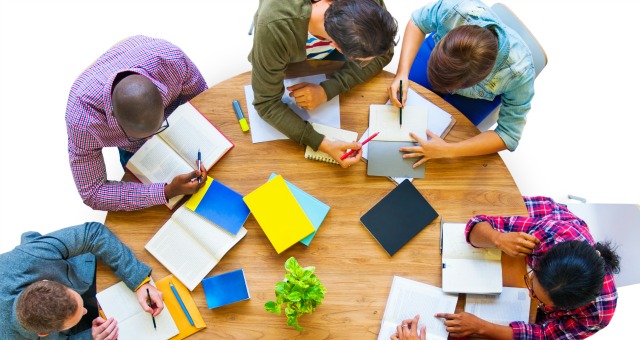COOPERATIVE LEARNING..what the TEACHER ordered!

Cooperative Learning
Definition: The teaching method which allows learners to work together and discover new concepts is called cooperative learning. This is the most progressive and innovative teaching method which places the focus on learning from each other and cooperating together to achieve the learning objectives under the supervision and guidance of the teacher.
For instance, students working together to read and understand the major theme of a short story is an example of cooperative learning. The teacher remains passive, checking the students while the learners study together to achieve the learning objectives.
Characteristics
Cooperative learning has some qualities. They are stated below:
1.Cooperative learning is a student-centered approach. The students are actively learning and discovering together. The teacher, on the other hand, acts as a passive supervisor and facilitator.
2.The students’ participation level and involvement is high.
3.The teacher acts as a bridge between the students. She keeps a check on them and refocuses their attention in case they get distracted.
4.The students can learn any topic from any subject. This shows the universality of the method. It is not restricted to one field. It can be used for various disciplines.
5.Students have two main sources of learning—their teammates and their surroundings. They observe their environment and work with their team members to complete the task.
6.Learners have different tasks they can complete. Teachers can give short individual activities or lengthy group assignments.
7.Every student participates and adds something to the group. Each student is responsible for completing his or her individual part. This also enables the teacher to grade the students’ performance individually.
Characteristics Continued
8.The teacher takes rounds of the classroom and observes the groups. Once the task is completed, she can give her feedback to the students. Also, students can give each other feedback based on their individual contributions. Therefore, this method provides double feedback.
9.Working together allows the students to interact with each other and enhances socializing skills.
10.Students need to convey their ideas and opinions to their teammates. Hence, they learn how to organize and sequence their thoughts and say them. This improves their communication skills.
11.Since the students are working in a team, they must learn to respect each other’s ideas, thoughts and feelings. This improves understanding, friendship and social skills.
12.Some groups might have a leader who keeps a check on his/her fellow teammates. This develops leadership skills and a sense of responsibility.
13.Cooperation and collaboration is necessary for task completion. Therefore, students also develop problem-solving attitudes and critical thinking skills.
14.The students work by themselves and this promotes confidence, self-reliance, and self-learning.
Also: READ PERSONALITY PAGES
Interested in poetry? Read more HERE!
Currently, I am a student of Fatima Jinnah Women University. With a burning passion for psychology, words, and dreams, I decided to abandon medical studies for humanities. These days, when I’m not listening to ballads, watching movies, or sitting down with a good novel, I am rigorously studying Hangul (Korean language) to satisfy my obsession for BTS and K dramas. I’m a thinking introvert and INFJ personality. Therefore, I like ‘me time’. My articles typically resonate with psychological well-being advice.









